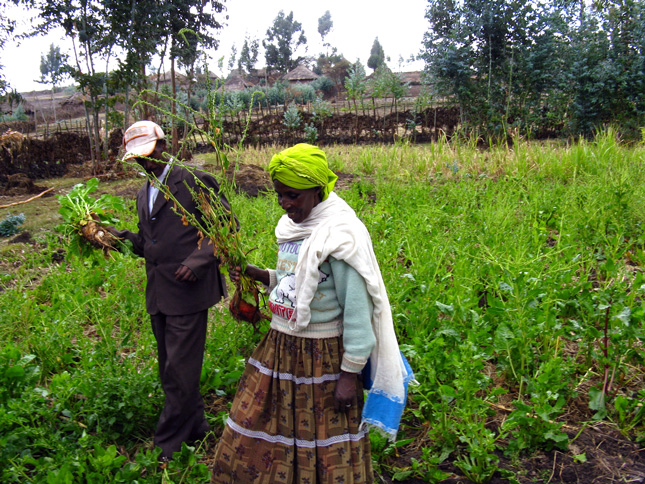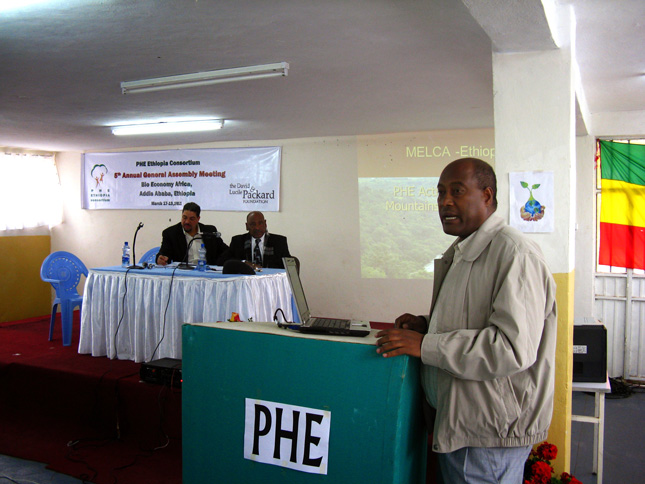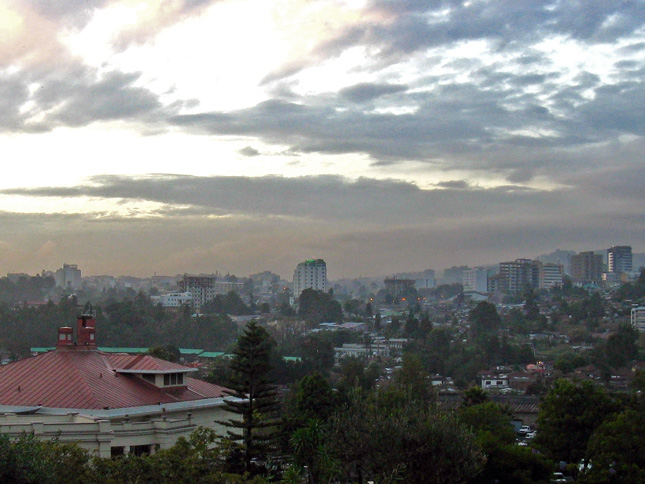-
Top 10 Posts for March 2011
›South Asia – from the Mekong to India’s Maoists – was popular last month, along with continuing interest in Tunisia’s demography, the recent rise in staple food prices, and ECSP’s on-the-ground reporting from Ethiopia:
1. Managing the Mekong: Conflict or Compromise?
2. Tunisia’s Shot at Democracy: What Demographics and Recent History Tell Us
3. Eye on Environmental Security: Mapping the Hot Spots of the 2010/11 Food Crisis
4. India’s Maoists: South Asia’s “Other” Insurgency
5. From Ethiopia: The Continuing Challenges of Integrated Development6. Carrying Capacity: Should We Be Aiming to Survive or Flourish?
7. Congressional Report: Avoiding “Water Wars” in Central and South Asia; Scarcity and Stability in Afghanistan and Pakistan
8. DRC’s Conflict Minerals: Can U.S. Law Impact the Violence?
9. Dot-Mom: Celebrating Ordinary Women Doing Extraordinary Things to Improve Gender Equality and Maternal Health Worldwide
10. Guest Contributor Frederick M. Burkle: Reading the QDDR; Civil-Military Interface Still Lacks Operational Clarity -
The Impact of Environmental Change and Geography on Conflict
›“Environmental Change, Strategic Foresight, and Impacts on Military Power,” published in Parameters by Chad M. Briggs, the Minerva Chair of Energy and Environmental Security at the Air University, USAF, tackles the changing definition of “environmental security” and how the concept can help planners better prepare for the effects of climate change and an elevated focus on energy security. New potentially destabilizing issues like glacial melt, sea-level rise, and Arctic ice melt are on the horizon, writes Briggs. China and others are already planning for these events, and it’s important that the United States does the same, starting with a greater appreciation for the impact of environmental security on vulnerability and risk. “Due to past practices and bureaucratic stovepipes, implementation is limited more by initiative and imagination than actual resources,” he writes.
Clionadh Raleigh of Trinity College Dublin and the International Peace Research Institute finds in “Seeing the Forest for the Trees: Does Physical Geography Affect a State’s Conflict Risk?” that a region’s geography does not have a uniform effect on its likelihood of experiencing conflict. Raleigh’s conclusions, published in International Interactions, run counter to traditional histories which often emphasize the importance of physical geography, specifically with regard to civil war and insurgencies. Focusing on the Great Lakes region of Africa, Raleigh finds that other factors – like how populated an area is and its proximity to valuable natural resources – correlate higher with an area’s propensity for violence than any other factor. -
Watch Michael Renner on Improving Environmental Peacebuilding by Moving From the Technical to the Social
›“When we think about environmental peacebuilding opportunities…at a certain level it seems like a very straightforward, almost technical task,” said Michael Renner, senior researcher at the Worldwatch Institute, in this interview with ECSP. “But really stepping back, in a sense, this is far more than just a technical issue – it’s a broader social and, ultimately, political issue.”
As well as reducing tensions in conflict-prone areas, environmental peacebuilding – like reforestation and land/water management initiatives – can have a great impact on local livelihoods. Renner discussed the importance, therefore, of working alongside affected communities to address specific, long-term needs. “You need to have a buy-in from the local communities,” he said. “If you don’t, you may well undertake these efforts, but it’s not very clear how long they can last and how successful they can be.”
“I think it’s very important to understand these as challenges from an interdisciplinary point of view, that really require us not to think in terms of just ‘what’s the best technology, what’s the best practice,’” Renner said. “But also ‘how do we ensure really that this links up with the needs on the ground of specific communities?’” -
Integrated Approach Helps “Model Farmers” Increase Productivity in Ethiopia
›March 24, 2011 // By Schuyler Null
To reach the village of Grar Gaber from Addis Ababa, you drive up over the Entoto Mountains overlooking the capital then motor down two hours of new Japanese-built highway to the town of Fiche. From there it’s 20 minutes on a broken dirt road across rocky hills. I was joined there by about 20 others from the PHE Ethiopia Consortium’s general assembly (see day one and day two coverage here) and Population Action International, to visit an integrated population, health, and environment (PHE) development program run by LEM Ethiopia.
-
The Continuing Challenges of Integrated Development
›March 20, 2011 // By Schuyler Null
“How are we going to feed all these mouths?” asked Bekele Hambissa, director of the Environmental Protection and Development Organization in Addis, on day two of the PHE Ethiopia Consortium general assembly (read about day one here). Environmental resources are directly tied to Ethiopia’s population growth, said Hambissa, during a discussion of balancing efforts to address population growth, environment, and livelihoods. While poverty alleviation is an important goal of population, health, and environment integration (PHE), it must be environmentally sustainable, he said.
-
“Better Bang for the Buck”: Blogging From Ethiopia’s Population, Health, and Environment General Assembly
›March 18, 2011 // By Schuyler Null
Hello from Addis Ababa, where I am blogging from the 5th annual general assembly of the Population, Health, and Environment (PHE) Consortium of Ethiopia (see further coverage here). Along with the Philippines, Ethiopia is the largest PHE programmer in the world, both in terms of number of programs and people affected, and for good reason: The country combines dire need, willing donors, and a great deal of local capacity and will.
-
Congressional Report on Avoiding “Water Wars” in Afghanistan and Pakistan
›March 15, 2011 // By Schuyler Null“Water plays an increasingly important role in our diplomatic and national security interests in [Central and South Asia], and we must ensure that our approach is carefully considered and coordinated across the interagency,” begins a new staff briefing, Avoiding Waters Wars: Water Scarcity and Central Asia’s Growing Importance for Stability in Afghanistan and Pakistan, prepared for the Senate Foreign Relations Committee. “As water demand for food production and electricity generation increases, in part as a result of the quickening pace of climate change, so too must our efforts to provide water security,” write the authors.
The report focuses mainly on Afghanistan and Pakistan but also considers “the interests in the shared waters by India and the neighboring five Central Asian countries – Uzbekistan, Tajikistan, Kazakhstan, Kyrgyzstan, and Turkmenistan.”
ECSP is cited twice in the report, both from “Water Can Be a Pathway to Peace, Not War,” in ECSP Report 13:The Navigating Peace Initiative’s Water Conflict and Cooperation Working Group correctly summarized the current state of water use by saying, “water use is shifting to less-traditional sources such as deep fossil aquifers and wastewater reclamation. Conflict, too, is becoming less traditional, driven increasingly by internal or local pressures or, more subtly, by poverty and instability. These changes suggest that tomorrow’s water disputes may look very different from today’s.”
And again in breaking down the notion of impending water wars:Given the important role water plays in Central and South Asia as a primary driver of human insecurity, it is important to recognize that for the most part, the looming threat of so-called “water wars” has not yet come to fruition. Instead, many regions threatened by water scarcity have avoided violent clashes through discussion, compromise, and agreements. This is because “[w]ater – being international, indispensable, and emotional – can serve as a cornerstone for confidence building and a potential entry point for peace.”
USAID’s “Changing Glaciers and Hydrology in Asia: Addressing Vulnerabilities to Glacier Melt Impacts,” which was launched here at the Wilson Center last fall, also made an appearance:Central Asia and India face critical challenges in monitoring glaciers and tracking changes, particularly differences from year to year. As USAID’s report “Changing Glaciers and Hydrology in Asia: Addressing Vulnerabilities to Glacier Melt Impacts” noted, “[t]he review of scientific information about glacier melt in High Asia revealed, first and foremost, a lack of data and information, a lack that hampers attempts to project likely impacts and take action to adapt to changed conditions.” The United States should engage in collaborative glacier monitoring programs and those that develop local or sub-national water monitoring capacity.
The report concludes that “water scarcity, coupled with how governments address these challenges,” can either exacerbate conflict or promote cooperation in the region. It’s also worth noting that the authors specifically mention the links between increased water use and growing populations in the region, specifically with regard to India and Pakistan:With a population already exceeding 1.1 billion people and forecasts indicating continued growth to over 1.5 billion by 2035, India’s demand for water is rising at unprecedented rates.
The drive to meet energy and development demands from both countries has led to plans for extensive hydrological projects that could spark tensions between the two over the Indus Waters Treaty (which has withstood four Indo-Pakistani wars).
The authors praise the attention given to the matter thus far by the Obama administration, but they also write that “although it is still too early to determine the impacts of our efforts in the broader region, now is the time to begin evaluating water-related trends” at a more systematic level.
Sources: U.S. Senate Committee on Foreign Relations. -
Watch: Roger-Mark De Souza on the Scaling Advantages of Population, Health, and Environment Integration
›March 11, 2011 // By Schuyler NullBy integrating population, health, and environment (PHE) efforts, development programs can make a difference in people’s lives in a real and meaningful way – one which they understand, appreciate, and desire, said Roger-Mark De Souza in this interview with ECSP. De Souza is the vice president of research and director of the Climate Program at Population Action International.
The PHE approach “allows itself to be applied at different levels,” said De Souza. “It’s easily implemented at the level of a village, or a town, or a city where a number of individuals can say ‘these are concrete results and outcomes that we want in our lives and that we want to live our lives in an integrated way.’”
PHE interventions not only provide tangible results to individuals, said De Souza, but they also help accomplish broader policy objectives, including improving health and alleviating poverty.
“There are lessons to be learned from different areas of integration, not just population, health, and environment,” De Souza said. For example, initiatives that integrate food security and HIV/AIDS deal with issues “similar to the ones we deal with in integrating population, health, and environment,” he said. Lessons and experiences need to be shared between these communities, but they also share similar advantages: From a cost-efficiency stand point, integration simply provides greater “bang for the buck,” he said.
Showing posts by Schuyler Null.








